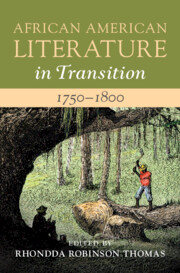Refine search
Actions for selected content:
201 results
Smartphone-based text obtained via passive sensing as it relates to direct suicide risk assessment
-
- Journal:
- Psychological Medicine / Volume 55 / 2025
- Published online by Cambridge University Press:
- 09 May 2025, e144
-
- Article
-
- You have access
- Open access
- HTML
- Export citation
Spirit Cave Resilience: How Do We Explain a 10,000-Year Continuity?
-
- Journal:
- American Antiquity / Volume 90 / Issue 2 / April 2025
- Published online by Cambridge University Press:
- 15 April 2025, pp. 243-262
- Print publication:
- April 2025
-
- Article
-
- You have access
- Open access
- HTML
- Export citation
UK cancer vaccine advance – Recognising and realising opportunities
-
- Journal:
- Cambridge Prisms: Precision Medicine / Volume 3 / 2025
- Published online by Cambridge University Press:
- 20 January 2025, e1
-
- Article
-
- You have access
- Open access
- HTML
- Export citation
1 Ototoxicity and Cognitive Outcomes among Children Treated for Brain Tumors in Infancy
-
- Journal:
- Journal of the International Neuropsychological Society / Volume 29 / Issue s1 / November 2023
- Published online by Cambridge University Press:
- 21 December 2023, p. 312
-
- Article
-
- You have access
- Export citation
A multi-country comparison of jurisdictions with and without mandatory nutrition labelling policies in restaurants: analysis of behaviours associated with menu labelling in the 2019 International Food Policy Study
- Part of
-
- Journal:
- Public Health Nutrition / Volume 26 / Issue 11 / November 2023
- Published online by Cambridge University Press:
- 04 September 2023, pp. 2595-2606
-
- Article
-
- You have access
- Open access
- HTML
- Export citation
201 Neighborhood socioeconomic deprivation is not an independent predictor of cardiovascular reactivity during static exercise in young adults
- Part of
-
- Journal:
- Journal of Clinical and Translational Science / Volume 7 / Issue s1 / April 2023
- Published online by Cambridge University Press:
- 24 April 2023, p. 61
-
- Article
-
- You have access
- Open access
- Export citation
A checklist of the bees (Hymenoptera: Apoidea) of Manitoba, Canada
-
- Journal:
- The Canadian Entomologist / Volume 155 / 2023
- Published online by Cambridge University Press:
- 27 January 2023, e3
-
- Article
-
- You have access
- Open access
- HTML
- Export citation
A systematic review and mixed-methods synthesis of the experiences, perceptions and attitudes of prison staff regarding adult prisoners who self-harm
-
- Journal:
- BJPsych Open / Volume 8 / Issue 4 / July 2022
- Published online by Cambridge University Press:
- 06 June 2022, e102
-
- Article
-
- You have access
- Open access
- HTML
- Export citation
Chapter 17 - Lower Limb Clinical Cases
-
-
- Book:
- Orthopaedic Examination Techniques
- Published online:
- 22 April 2022
- Print publication:
- 12 May 2022, pp 300-315
-
- Chapter
- Export citation
Chronology
-
- Book:
- African American Literature in Transition, 1750–1800
- Published online:
- 01 April 2022
- Print publication:
- 07 April 2022, pp xi-xvi
-
- Chapter
- Export citation
Contributors
-
- Book:
- African American Literature in Transition, 1750–1800
- Published online:
- 01 April 2022
- Print publication:
- 07 April 2022, pp vii-viii
-
- Chapter
- Export citation
Part II - Black Writing and Revolution
-
- Book:
- African American Literature in Transition, 1750–1800
- Published online:
- 01 April 2022
- Print publication:
- 07 April 2022, pp 97-178
-
- Chapter
- Export citation
Part I - Limits and Liberties of Early Black Print Culture
-
- Book:
- African American Literature in Transition, 1750–1800
- Published online:
- 01 April 2022
- Print publication:
- 07 April 2022, pp 15-96
-
- Chapter
- Export citation
Index
-
- Book:
- African American Literature in Transition, 1750–1800
- Published online:
- 01 April 2022
- Print publication:
- 07 April 2022, pp 331-340
-
- Chapter
- Export citation
Part IV - Evolutions of Early Black Literature
-
- Book:
- African American Literature in Transition, 1750–1800
- Published online:
- 01 April 2022
- Print publication:
- 07 April 2022, pp 255-330
-
- Chapter
- Export citation
Copyright page
-
- Book:
- African American Literature in Transition, 1750–1800
- Published online:
- 01 April 2022
- Print publication:
- 07 April 2022, pp iv-iv
-
- Chapter
- Export citation
Part III - Early African American Life in Literature
-
- Book:
- African American Literature in Transition, 1750–1800
- Published online:
- 01 April 2022
- Print publication:
- 07 April 2022, pp 179-254
-
- Chapter
- Export citation
Introduction
-
-
- Book:
- African American Literature in Transition, 1750–1800
- Published online:
- 01 April 2022
- Print publication:
- 07 April 2022, pp 1-14
-
- Chapter
- Export citation
Contents
-
- Book:
- African American Literature in Transition, 1750–1800
- Published online:
- 01 April 2022
- Print publication:
- 07 April 2022, pp v-vi
-
- Chapter
- Export citation

African American Literature in Transition, 1750–1800
-
- Published online:
- 01 April 2022
- Print publication:
- 07 April 2022
